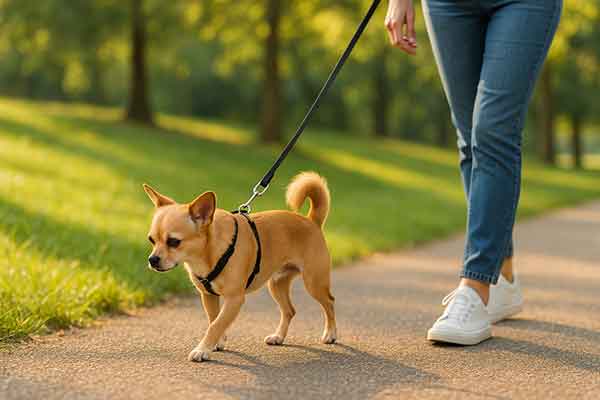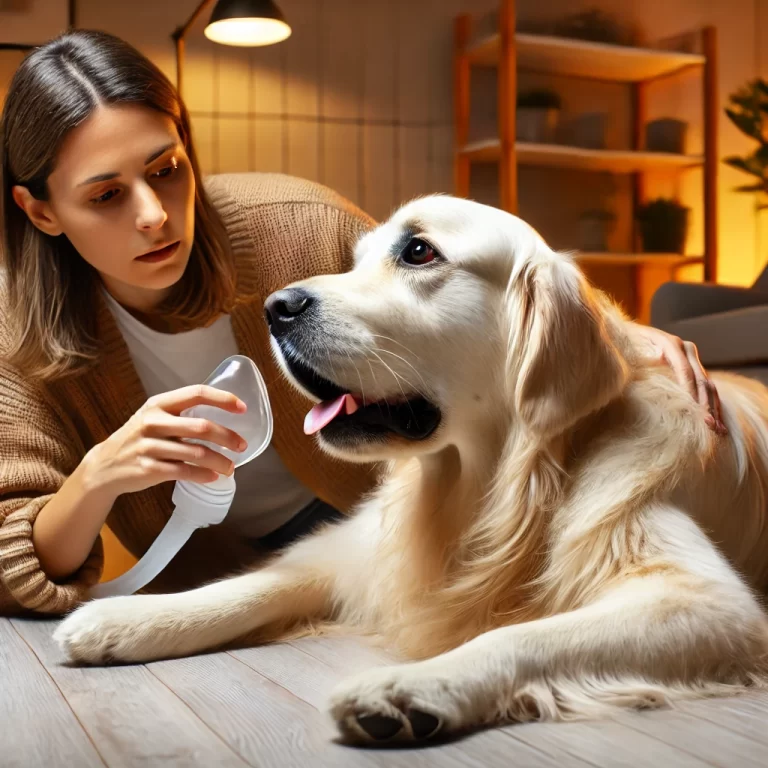Should You Walk a Dog with Luxating Patella? | Complete Care Guide
If your dog has been diagnosed with a luxating patella—also known as a dislocated kneecap—you may be wondering if daily walks are safe or potentially harmful. Regular exercise is a vital part of a dog’s health, but for pups with orthopedic conditions, it must be approached carefully. In this article, we’ll explore the benefits and risks of walking a dog with a luxating patella, how to do it safely, and what other options you may have for maintaining your dog’s mobility and well-being.
Table of Contents
- What Is Luxating Patella in Dogs?
- Can You Walk a Dog with Luxating Patella?
- Benefits of Walking for Dogs with Luxating Patella
- Tips for Walking Dogs with Luxating Patella Safely
- When to Avoid Walking a Dog with Patella Issues
- Other Low-Impact Exercises for Joint Health
- Treatment Options Beyond Exercise
- FAQ
What Is Luxating Patella in Dogs?
Luxating patella is a condition where the kneecap (patella) slips out of its normal groove in the thigh bone. It’s most common in small breed dogs such as Chihuahuas, Pomeranians, and Yorkies, but can also affect larger breeds.
There are four grades of luxating patella, ranging from mild (Grade I) to severe (Grade IV), with symptoms including:
- Skipping or hopping on one leg
- Lameness or limping
- Difficulty standing or climbing stairs
- Intermittent pain or reluctance to move
The severity of symptoms can influence your dog’s ability to walk comfortably. Fortunately, in many cases, controlled exercise is not only possible but beneficial.
Can You Walk a Dog with Luxating Patella?
Yes, you can walk a dog with luxating patella—if done correctly and under veterinary guidance. In fact, walking can help strengthen the muscles around the joint, improve stability, and support long-term mobility.
However, you’ll need to tailor walks to your dog’s specific condition, considering factors such as:
- Grade of the luxation
- Your dog’s pain level
- Type of terrain
- Weather conditions
- Duration and frequency of walks
Short, controlled walks on flat, soft surfaces are generally the best option. Avoid overexertion or activities that involve jumping, sharp turns, or slippery footing.

Benefits of Walking for Dogs with Luxating Patella
When approached properly, walking can provide numerous benefits for dogs with joint instability:
1. Strengthens Muscles
Walking helps build strength in the quadriceps and surrounding muscles, which can support the knee joint and reduce the frequency of dislocations.
2. Maintains Healthy Weight
Extra weight puts more stress on joints. Controlled walks help burn calories and manage your dog’s weight—critical for joint protection.
3. Improves Circulation
Movement encourages blood flow to the joints, helping deliver nutrients that aid in repair and reduce inflammation.
4. Enhances Mental Health
Gentle exercise is important for your dog’s emotional well-being. Walks provide stimulation, social interaction, and a sense of routine.
Tips for Walking Dogs with Luxating Patella Safely
1. Keep Walks Short and Consistent
Start with 5–10 minute walks, 2–3 times a day. Gradually increase duration based on your dog’s comfort level and your vet’s advice.
2. Use a Harness Instead of a Collar
A well-fitted harness avoids unnecessary pressure on the neck and helps you better control your dog’s movement.
3. Stick to Flat Terrain
Avoid hills, stairs, and uneven surfaces. Walk on soft grass, dirt paths, or padded sidewalks when possible.
4. Monitor Your Dog Closely
Watch for signs of fatigue, limping, or reluctance to move. If any of these occur, stop and allow your dog to rest or return home early.
5. Warm-Up and Cool-Down
Start walks slowly to warm up joints. Allow your dog to rest afterward to avoid joint inflammation.
6. Avoid Off-Leash Activities
Off-leash play may lead to sudden sprints, twists, or jumps—all of which can aggravate knee instability.
When to Avoid Walking a Dog with Patella Issues
There are times when walking should be limited or avoided entirely:
- During flare-ups or acute pain episodes
- Immediately after surgery (follow your vet’s post-op plan)
- On icy or slick surfaces
- When limping worsens with movement
If in doubt, consult your veterinarian before resuming any exercise routine.
Other Low-Impact Exercises for Joint Health
In addition to walks, there are several joint-friendly activities that can help maintain your dog’s mobility:
1. Swimming
Hydrotherapy is excellent for dogs with luxating patella. It strengthens muscles without stressing joints.
2. Treadmill Workouts
Under supervision, walking on a slow treadmill can provide controlled, even movement.
3. Balance and Core Exercises
Veterinary physical therapy may include wobble boards or balance discs to improve joint stability.
4. Massage and Passive Range of Motion (PROM)
Gently flexing and extending the affected limb can help maintain flexibility and relieve tension.
Treatment Options Beyond Exercise
If your dog has moderate to severe luxation or recurring pain, additional treatments may be needed:
1. Joint Supplements
Products containing glucosamine, chondroitin, MSM, or omega-3s may help reduce inflammation and support cartilage health.
2. Pain Management
Non-steroidal anti-inflammatory drugs (NSAIDs) or other medications may be prescribed by your vet.
3. Physical Therapy
Certified canine rehabilitation specialists can design customized recovery plans including exercise, massage, and laser therapy.
4. Surgery
In severe cases (Grade III or IV), surgical intervention may be necessary to realign the kneecap and prevent ongoing damage.
FAQ
Is it okay to walk a dog with luxating patella daily?
Yes, short daily walks can be beneficial if your dog is not in pain. Always follow your vet’s guidance and adjust based on your dog’s response.
Can exercise make luxating patella worse?
Overexertion or high-impact activity can worsen the condition. However, controlled low-impact exercise like walking is usually helpful.
Should I let my dog run with a luxating patella?
No. Running, jumping, or playing off-leash may cause the kneecap to dislocate further. Stick to gentle, controlled movements.
Can luxating patella heal without surgery?
Mild cases (Grade I–II) often improve with weight management, supplements, and exercise. Severe cases may require surgery.
How can I tell if my dog is in pain when walking?
Signs include limping, lagging behind, whining, reluctance to continue, or licking at the knee. If these signs appear, stop the walk and consult your vet.
Conclusion
So, should you walk a dog with luxating patella? In most cases, yes—gentle walking can help maintain joint strength, manage weight, and improve your dog’s quality of life. However, it’s essential to tailor the exercise to your dog’s individual needs and avoid overexertion.
Work closely with your veterinarian to develop a safe, effective activity plan, and consider supplements or rehabilitation therapy as part of your dog’s care. With the right approach, dogs with luxating patella can continue to enjoy daily walks—and live happy, active lives.



